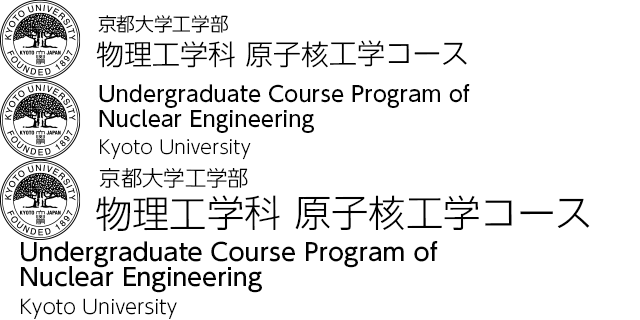After Graduation
The education program of the Department of Nuclear Engineering develops a solid problem-solving ability based on a fundamental understanding, so graduates will be equipped for a wide range of work opportunities.
| Companies recommended by the school | Companies where graduates have found work |
|---|---|
| 48 companies, including Asahi Glass, Furukawa Electric, Fuji Photo Film, Mitsubishi Chemical, Murata Machinery, NEC, Kyocera, Kobe Steel, Kansai Electric Power, Canon, Mazda, Brother Industries, Mitsubishi Heavy Industries, Fujitsu, Rohm, Toshiba, Hitachi, INAX, Tokyo Electric Power (FY2006 list) | Many, including Japan Atomic Energy Agency, Kansai Electric Power, Tokyo Electric Power, Mitsubishi Heavy Industries, Hitachi, Toshiba, Fujitsu, NEC, Shimadzu Corporation, Murata Manufacturing, Hamamatsu Photonics, Nikon, Canon, Fuji Film, Asahi Glass, Kyocera, Mazda, The Japan Research Institute |
I want to pursue research more deeply!
Of course, you can aim to become a professional researcher. Although it’s a challenging path, many graduates of the Department of Nuclear Engineering have started to work as researchers.
The latest situation
Approximately 90% of the students who graduate from the undergraduate school go on to do a Masters course—an extremely high proportion. About 20% of graduates from the Masters program enter the doctoral program. Most of the other graduates find employment in private companies, working in a wide range of fields. Most of the students graduating from the doctoral program find employment in educational and research institutes.
A breakdown by sector shows that some 40% work in energy-related fields, and 30% in quantum-science-related fields, and these proportions are increasing. Other fields account for the remaining 30%. This classification consists of broadly dividing the fields into energy-related fields (e.g., nuclear power and nuclear fusion), and quantum science (e.g., quantum beams, radiation, physics, semiconductors, measurement, and medical services). Every other field is categorized as "other"(e.g., manufacturing, finance, mass media, self-employment, service industries, high-school teaching, medical practice).
A breakdown by type of occupation shows that 10% work in education and research; 10% in electric power; 60% in manufacturing, and 20% in other kinds of occupation. A further breakdown of the manufacturing category shows that 20% work in chemical materials, 20% in communications, 30% in electrical and electronics, and 30% in machinery. Looking at the latest trends, the field of chemical materials remains more or less constant, machinery is declining, while electrical and electronics, and communications and computing are growing in importance.
| Education and research | university academic staff, research and development institutes, government agencies |
| Electric power | electric power companies |
| Manufacturers |
subdivided into the following four categories:
|
| Other | medical practice, finance, security, consulting, mass media, self-employment, and services |
